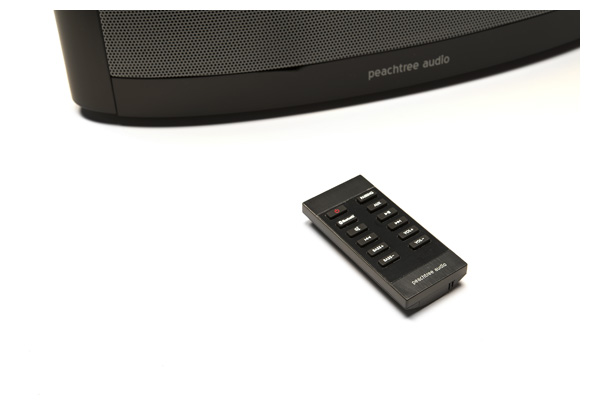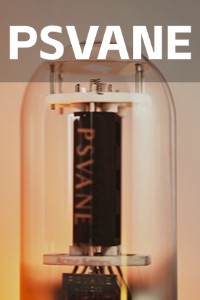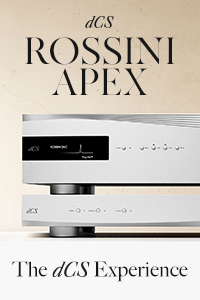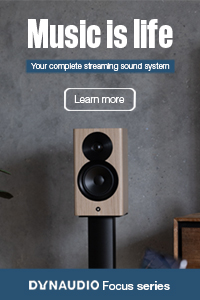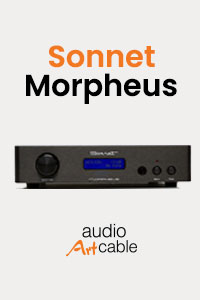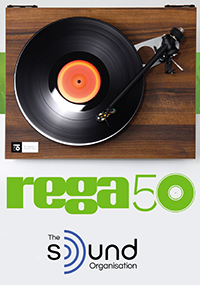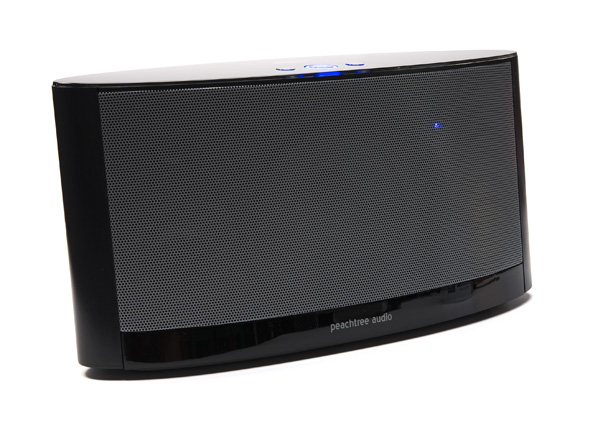 Some audio fans crave a stereo experience courtesy of multiple components. Of course, more equipment means more money. Plus, each component needs its own power cord, interconnects and shelf space. For those who seek a smaller, more portable home-audio experience—or for those who simply want a more manageable music system outside of their primary listening room—a single-box wireless audio product, like the Peachtree deepblue, is a great solution.
Some audio fans crave a stereo experience courtesy of multiple components. Of course, more equipment means more money. Plus, each component needs its own power cord, interconnects and shelf space. For those who seek a smaller, more portable home-audio experience—or for those who simply want a more manageable music system outside of their primary listening room—a single-box wireless audio product, like the Peachtree deepblue, is a great solution.
The elliptical cabinet of the deepblue measures 8 inches tall, 6 inches deep, and 16 inches long, and it is slightly flared at the bottom. The unit weighs a substantial 16 pounds. This form factor makes this Peachtree portable and it can bring a lot of sound to any size room.
The deepblue’s facade comprises a black plastic case with a metallic grille, which extends the full width and height of the unit. The result is slightly cheap looking, but those who believe sound is more important than appearance will easily forget the unit’s aesthetic. The grille protects the forward-facing drivers neatly packed behind it. On each side of the unit resides a small tweeter placed above a midrange driver. These four drivers flank a centered 6.5-inch woofer. Thanks to the deepblue’s onboard amplifier, the package can put forth a hefty 200 watts.
Peachtree’s design for button controls on the deepblue is a model of simplicity. There’s a power button nestled between a volume up and a volume down button. That’s it. And that’s all you really need. The deepblue’s remote control enables a few additional and helpful adjustments. In addition to selecting standby power and volume from the remote, the user can adjust the unit’s bass output for various types of music or preference. It’s also nice to have the ability to adjust bass to compensate for placement near a wall or inside an enclosure, which sometimes result in bass “loading,” or boominess.
Connecting the Equipment
The only wires a user needs to contend with for the deepblue are the power cord and the mini-jack auxiliary stereo connector. This 3.5-mm input allows users to connect an external source manually. But for those who want to scale down to just the power cord, deepblue also accommodates Bluetooth pairing with devices like an iPad, iPhone, or a computer, as long as those devices support A2DP Bluetooth audio. The remote also enables source switching so that the listener can choose between the connected auxiliary source and the Bluetooth source from the comfort of a listening chair.
Bluetooth setup is very simple: activate Bluetooth on an external music source; press and hold the deepblue’s power button for five seconds (or just press the remote control’s “Pairing” button for two seconds); and then the unit’s light flashes slowly and initiates the coupling process. Peachtree notes that the deepblue has a maximum Bluetooth range of around 30 feet, although obstructions and walls can reduce that distance.
Those who opt for Bluetooth and commit their phone as the music source need not worry about missing a call while enveloped in the listening experience. The deepblue recognizes the call and will fade and stop the music, alerting the listener. Once the call is complete and disconnected, the unit resumes playing music. It’s a marvelous capability and it works flawlessly.
Testing Bluetooth functionality on an iPhone 4 with iOS7, I find that the process is just as easy and seamless as advertised. After holding down the “pairing” button on the remote at 15 feet away, the deepblue flashes its blue LED and “Peachtree BT” appears among the connection options on my phone. After I touch that source listing on the phone and after a brief pause, the phone connects. Selecting some music on the phone produces immediate and good quality sound from the Peachtree.
With a Bluetooth source, the paired communication enables the remote to advance or pause the song playing. So, when listening to the Police’s album Synchronicity, it’s easy to skip the song “Mother” before it has a chance to claw its way out of the speakers. When I test this functionality, the remote has some trouble interfacing with my iPhone 4’s controls, but I’m sure newer mobile devices will have less of a problem.
Being accustomed to a large stereo reference system, I reset my expectations for the single-box deepblue. After much listening, I’m mighty impressed with what’s achievable for the $399 cost of the unit. Even in my large listening space—17 feet deep by 20 feet wide by 10.5 feet high—the deepblue puts out plenty of sound to fill the room without any perceivable strain. Whether the source is a Bluetooth-paired phone with songs ripped at 128 kbps, an iPod with lossless files or a CD player connected to the auxiliary port, the sound remains very good. The better the source material the more the Peachtree rewards the listener.
Given the deepblue’s design as a compact, single-box unit, a listener can expect inherent limits in stereo imaging and soundstage. All musical elements sound compressed together; however, considering that limitation, the deepblue offers a reasonable soundstage.
The deepblue’s portrayal of music remains generally relaxed, but it is not without punch. Throughout hours of listening to many types of music, stridency is limited. High frequencies, in some cases, sound a bit rolled off, but there’s still plenty of treble to satisfy most listeners. Vocals are nicely rendered and very present in the mix, but some vocal test tracks expose a bit of sibilance. Regardless of music type—be it classical, jazz, electronica or rock—the balance of instruments remains very well portrayed.
Even through a Bluetooth connection, the cymbals on the Dave Brubeck Quartet’s “Blue Rondo à la Turk” offer a surprising amount of sparkle and decay, which appropriately jump out from the overall mix. Playing Big Bad Voodoo Daddy’s debut album tests the Peachtree’s ability to handle a multitude of simultaneous instruments and vocals—and it does not disappoint. It’s still easy to pick out each instrument sonically, despite the limited soundstage separation.
Exploring the Depths
As mentioned earlier, the bass adjustment is a lot of fun to experiment with. While a small physical box has some limitations in the lowest frequencies, the Peachtree is definitely no slouch. Jean Michel Jarre’s album “Rendez-Vous” leads in with a hefty, synthesized bass roar. With the deepblue’s bass turned up, even at 15 feet away, the sound causes the sofa to vibrate slightly and unexpectedly.
On some tracks, I enjoy listening with the bass accentuated a bit, though some boominess and muddiness is occasionally the result. The overall sonic presentation is tighter with a solid, stable surface beneath the unit. For testing, I place the deepblue on a 26-inch-tall spiked speaker stand, allowing the tweeters to hover near ear-level. For home listeners, some placement experimentation is worth the time to find the balance that best serves a user’s needs and preferences.
The Peachtree deepblue is not a system intended for audiophiles seeking the greatest level of stereo reproduction, imaging and nuance. It is designed to be a simple, plug-and-play solution to fill any room with music. It meets its intended goals very well, and then some.
At $399, the deepblue offers very good sound for its price point. Notable benefits are authoritative bass, enough horsepower to play at substantial volumes and solid rendering of all music types. This Peachtree does all of this with great user-friendliness. Plus, a listener can place it anywhere an electrical outlet is near. For those seeking a flexible, unobtrusive and turnkey audio solution, do yourself a favor and check out the Peachtree deepblue. You might find it to be a perfect fit.
deepblue Bluetooth Music System
MSRP: $399
Periperherals
| Digital Sources | HP Desktop Computer with JRiver Media Center 19 iPod Gen 7 iPhone4 with iOS7, Audio Research CD3 MKII Light Harmonic DaVinci DAC |
| Cables | Jena Labs Valkyrie and Symphony interconnects Jena Labs Twin 15 speaker cables |
| Power Conditioner | Running Springs Audio Haley |
| Power Cords | Cardas Golden and RSA Mongoose |
| Accessories | Mapleshade SAMSON racks and shelves ASC TubeTraps Cathedral Sound room-dampening panels |




